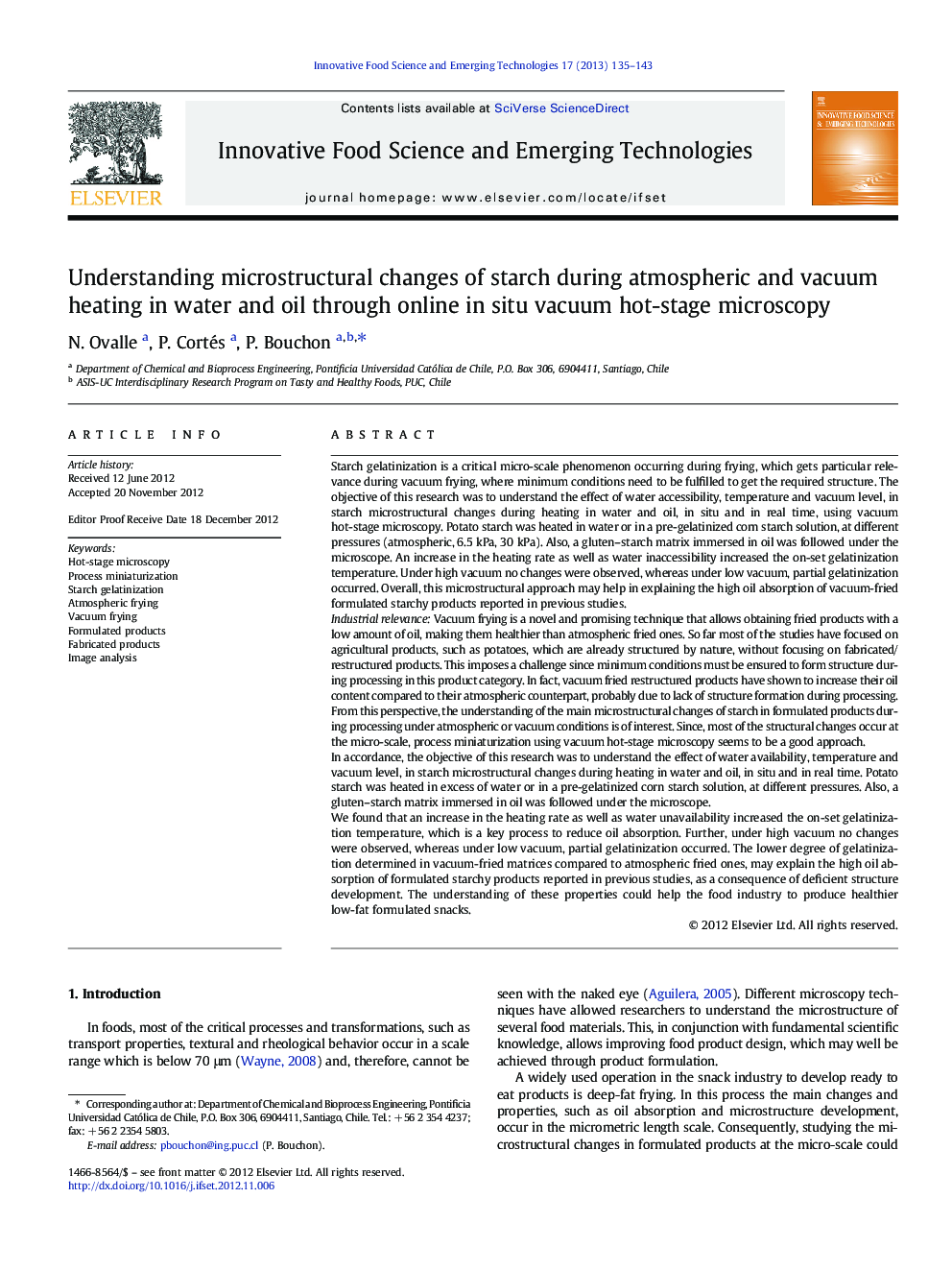| کد مقاله | کد نشریه | سال انتشار | مقاله انگلیسی | نسخه تمام متن |
|---|---|---|---|---|
| 2087122 | 1545549 | 2013 | 9 صفحه PDF | دانلود رایگان |

Starch gelatinization is a critical micro-scale phenomenon occurring during frying, which gets particular relevance during vacuum frying, where minimum conditions need to be fulfilled to get the required structure. The objective of this research was to understand the effect of water accessibility, temperature and vacuum level, in starch microstructural changes during heating in water and oil, in situ and in real time, using vacuum hot-stage microscopy. Potato starch was heated in water or in a pre-gelatinized corn starch solution, at different pressures (atmospheric, 6.5 kPa, 30 kPa). Also, a gluten–starch matrix immersed in oil was followed under the microscope. An increase in the heating rate as well as water inaccessibility increased the on-set gelatinization temperature. Under high vacuum no changes were observed, whereas under low vacuum, partial gelatinization occurred. Overall, this microstructural approach may help in explaining the high oil absorption of vacuum-fried formulated starchy products reported in previous studies.Industrial relevanceVacuum frying is a novel and promising technique that allows obtaining fried products with a low amount of oil, making them healthier than atmospheric fried ones. So far most of the studies have focused on agricultural products, such as potatoes, which are already structured by nature, without focusing on fabricated/restructured products. This imposes a challenge since minimum conditions must be ensured to form structure during processing in this product category. In fact, vacuum fried restructured products have shown to increase their oil content compared to their atmospheric counterpart, probably due to lack of structure formation during processing. From this perspective, the understanding of the main microstructural changes of starch in formulated products during processing under atmospheric or vacuum conditions is of interest. Since, most of the structural changes occur at the micro-scale, process miniaturization using vacuum hot-stage microscopy seems to be a good approach.In accordance, the objective of this research was to understand the effect of water availability, temperature and vacuum level, in starch microstructural changes during heating in water and oil, in situ and in real time. Potato starch was heated in excess of water or in a pre-gelatinized corn starch solution, at different pressures. Also, a gluten–starch matrix immersed in oil was followed under the microscope.We found that an increase in the heating rate as well as water unavailability increased the on-set gelatinization temperature, which is a key process to reduce oil absorption. Further, under high vacuum no changes were observed, whereas under low vacuum, partial gelatinization occurred. The lower degree of gelatinization determined in vacuum-fried matrices compared to atmospheric fried ones, may explain the high oil absorption of formulated starchy products reported in previous studies, as a consequence of deficient structure development. The understanding of these properties could help the food industry to produce healthier low-fat formulated snacks.
► Vacuum hot-stage microscopy allowed studying starch gelatinization at low pressure.
► Increasing the heating rate resulted in a higher onset gelatinization temperature.
► Decreasing water accessibility resulted in a higher onset gelatinization temperature.
► High vacuum heating did not induce significant starch microstructural changes.
► Low vacuum heating produced partial starch gelatinization.
Journal: Innovative Food Science & Emerging Technologies - Volume 17, January 2013, Pages 135–143